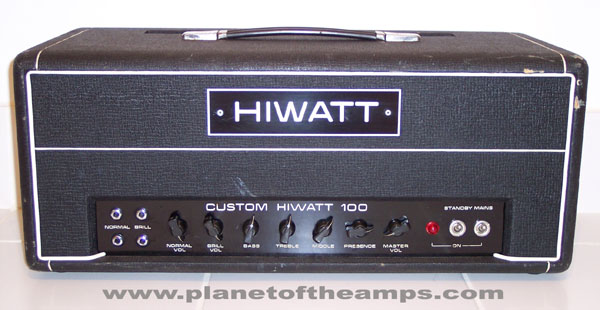psst
Inspired
I have one of these head amp switcher. It's for using one cabinet and two heads, and when you switch to one of them, the other one gets a dummy load.

So I used it for a *real* comparison between real preamp and poweramp, and axe's preamp and poweramp (no cabs or mics in the equation here).
For me a A/B comparison is the only valid, anything that takes more than a couple of seconds to switch cables makes you loose the perception of sound, and using two identical cabs it's not valid either, they are placed in different places in the room (even if they are together) and your ears position with respect to them is different too.
So I tried with my HIWATT DR-103 and my Fender "Big Box" '57 Tweed Twin with Axe's emulations of those same amps.
Axe goes to a non-valvular power amp, pretty linear (a Crown).
The Hiwatt was easy to get exactly the same sound, to the point I was playing rhythm and switching and it was not possible to know if I switched or not. Using a real Fuzz Face in front of them gave exactly the same sound too.

Then I tried with the Tweed Twin, after playing a little bit with the Damp and presence, I could get exactly the same sound too in clean.
When I pushed the Drive in the real one, there was a very small difference in the upper highs, but almost exactly the same sound.
Explanation could be that the one in the Axe is the Bassman Tweed, and although they are exactly the same circuit, the difference between them is the transformer and double number of power tubes (one has to feed a 4x10 cab and the other a 2x12).

Pretty happy with this thing. Next I'll try with my Dual Rectifier trem-o-verb.
Also next thing is making IRs of my cabinets. I already did that with my Hiwatt cabinet, and after some different reference mic re-positions and experiments (two meters away from the cab, more or less) I could get a IR that really sounds like a "real cab" sound through my FRFRs. Could not get it with the "official" cabs in the Axe, but now I'm completely happy.

So I used it for a *real* comparison between real preamp and poweramp, and axe's preamp and poweramp (no cabs or mics in the equation here).
For me a A/B comparison is the only valid, anything that takes more than a couple of seconds to switch cables makes you loose the perception of sound, and using two identical cabs it's not valid either, they are placed in different places in the room (even if they are together) and your ears position with respect to them is different too.
So I tried with my HIWATT DR-103 and my Fender "Big Box" '57 Tweed Twin with Axe's emulations of those same amps.
Axe goes to a non-valvular power amp, pretty linear (a Crown).
The Hiwatt was easy to get exactly the same sound, to the point I was playing rhythm and switching and it was not possible to know if I switched or not. Using a real Fuzz Face in front of them gave exactly the same sound too.

Then I tried with the Tweed Twin, after playing a little bit with the Damp and presence, I could get exactly the same sound too in clean.
When I pushed the Drive in the real one, there was a very small difference in the upper highs, but almost exactly the same sound.
Explanation could be that the one in the Axe is the Bassman Tweed, and although they are exactly the same circuit, the difference between them is the transformer and double number of power tubes (one has to feed a 4x10 cab and the other a 2x12).

Pretty happy with this thing. Next I'll try with my Dual Rectifier trem-o-verb.
Also next thing is making IRs of my cabinets. I already did that with my Hiwatt cabinet, and after some different reference mic re-positions and experiments (two meters away from the cab, more or less) I could get a IR that really sounds like a "real cab" sound through my FRFRs. Could not get it with the "official" cabs in the Axe, but now I'm completely happy.
